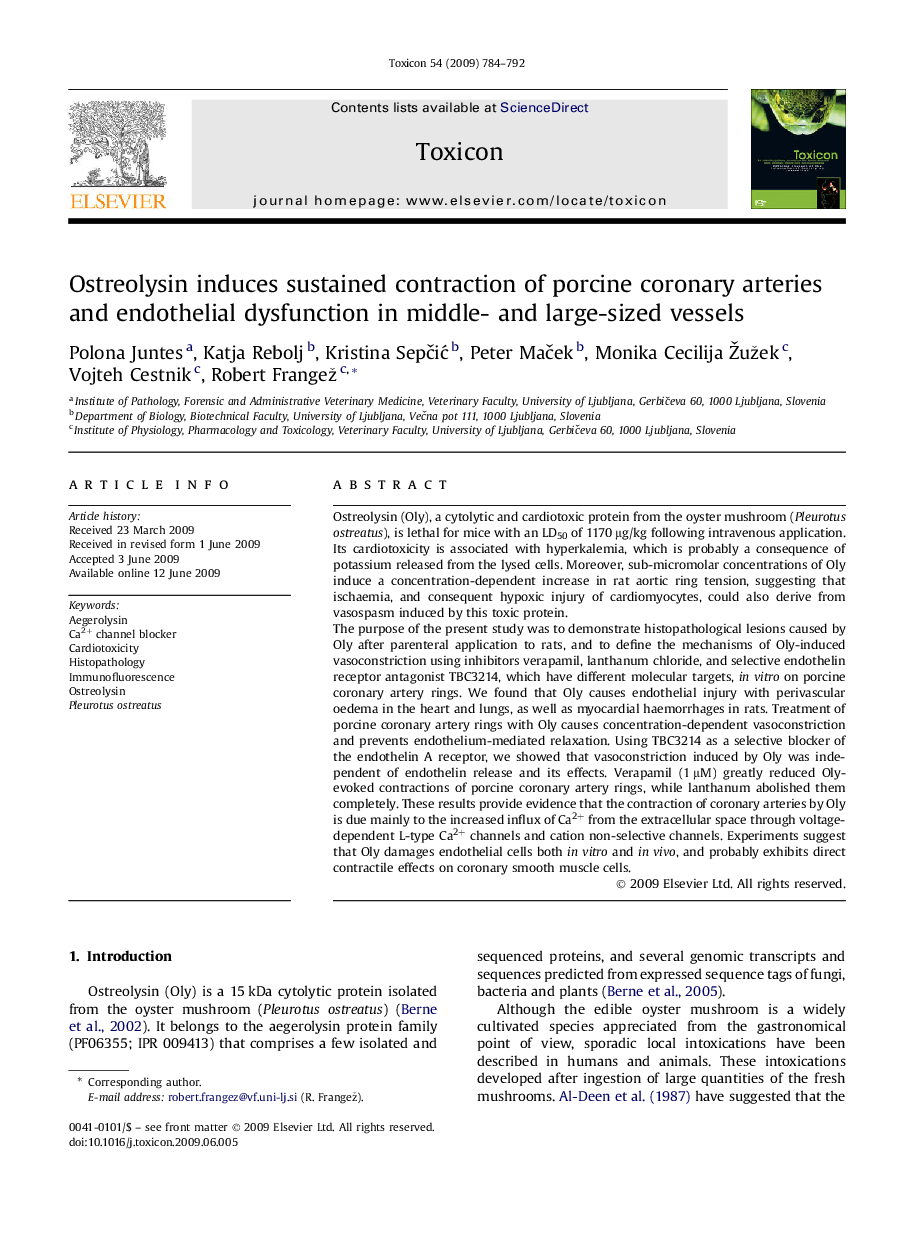| Article ID | Journal | Published Year | Pages | File Type |
|---|---|---|---|---|
| 2065562 | Toxicon | 2009 | 9 Pages |
Abstract
The purpose of the present study was to demonstrate histopathological lesions caused by Oly after parenteral application to rats, and to define the mechanisms of Oly-induced vasoconstriction using inhibitors verapamil, lanthanum chloride, and selective endothelin receptor antagonist TBC3214, which have different molecular targets, in vitro on porcine coronary artery rings. We found that Oly causes endothelial injury with perivascular oedema in the heart and lungs, as well as myocardial haemorrhages in rats. Treatment of porcine coronary artery rings with Oly causes concentration-dependent vasoconstriction and prevents endothelium-mediated relaxation. Using TBC3214 as a selective blocker of the endothelin A receptor, we showed that vasoconstriction induced by Oly was independent of endothelin release and its effects. Verapamil (1 μM) greatly reduced Oly-evoked contractions of porcine coronary artery rings, while lanthanum abolished them completely. These results provide evidence that the contraction of coronary arteries by Oly is due mainly to the increased influx of Ca2+ from the extracellular space through voltage-dependent L-type Ca2+ channels and cation non-selective channels. Experiments suggest that Oly damages endothelial cells both in vitro and in vivo, and probably exhibits direct contractile effects on coronary smooth muscle cells.
Keywords
Related Topics
Life Sciences
Biochemistry, Genetics and Molecular Biology
Biochemistry, Genetics and Molecular Biology (General)
Authors
Polona Juntes, Katja Rebolj, Kristina SepÄiÄ, Peter MaÄek, Monika Cecilija Žužek, Vojteh Cestnik, Robert Frangež,
